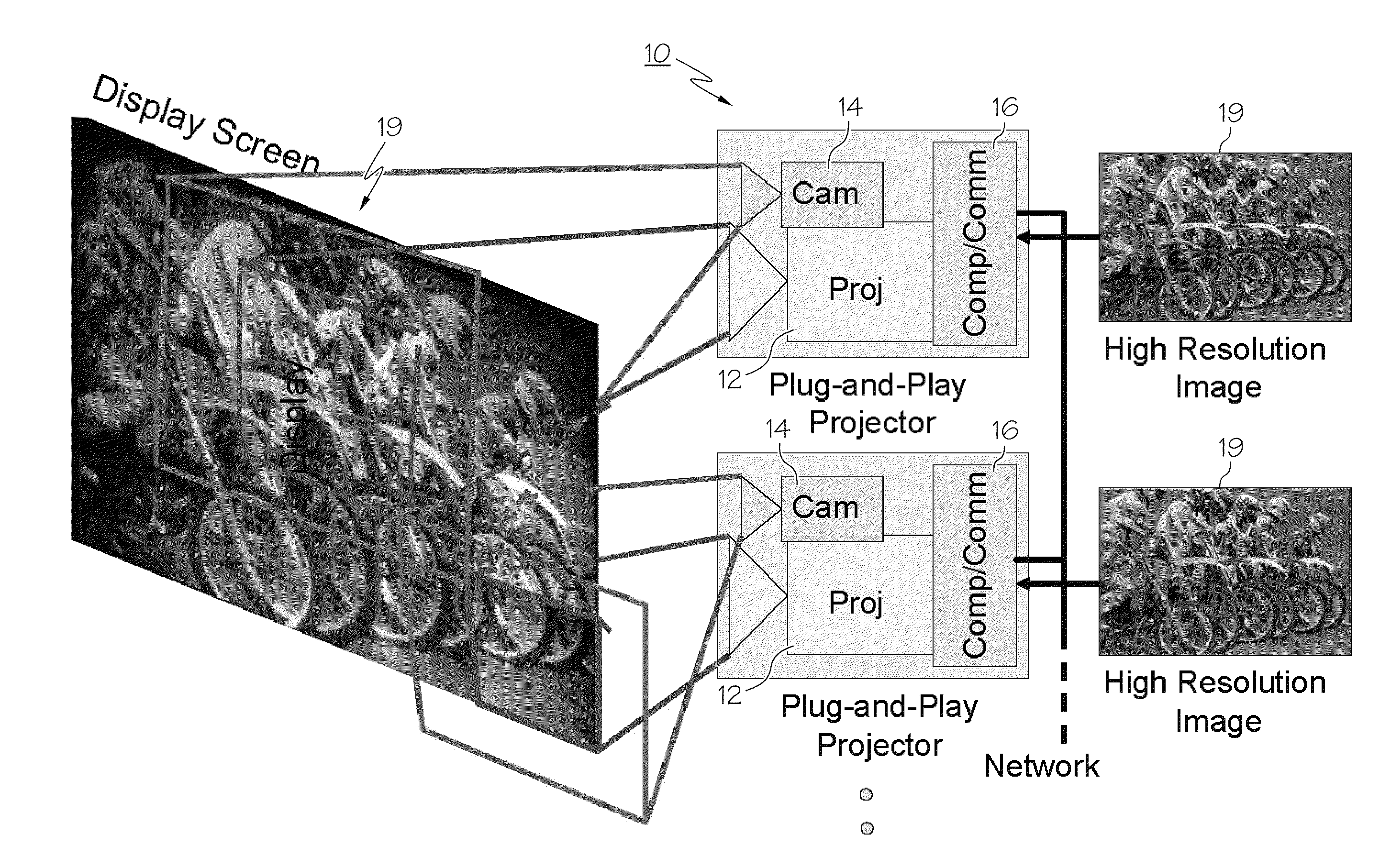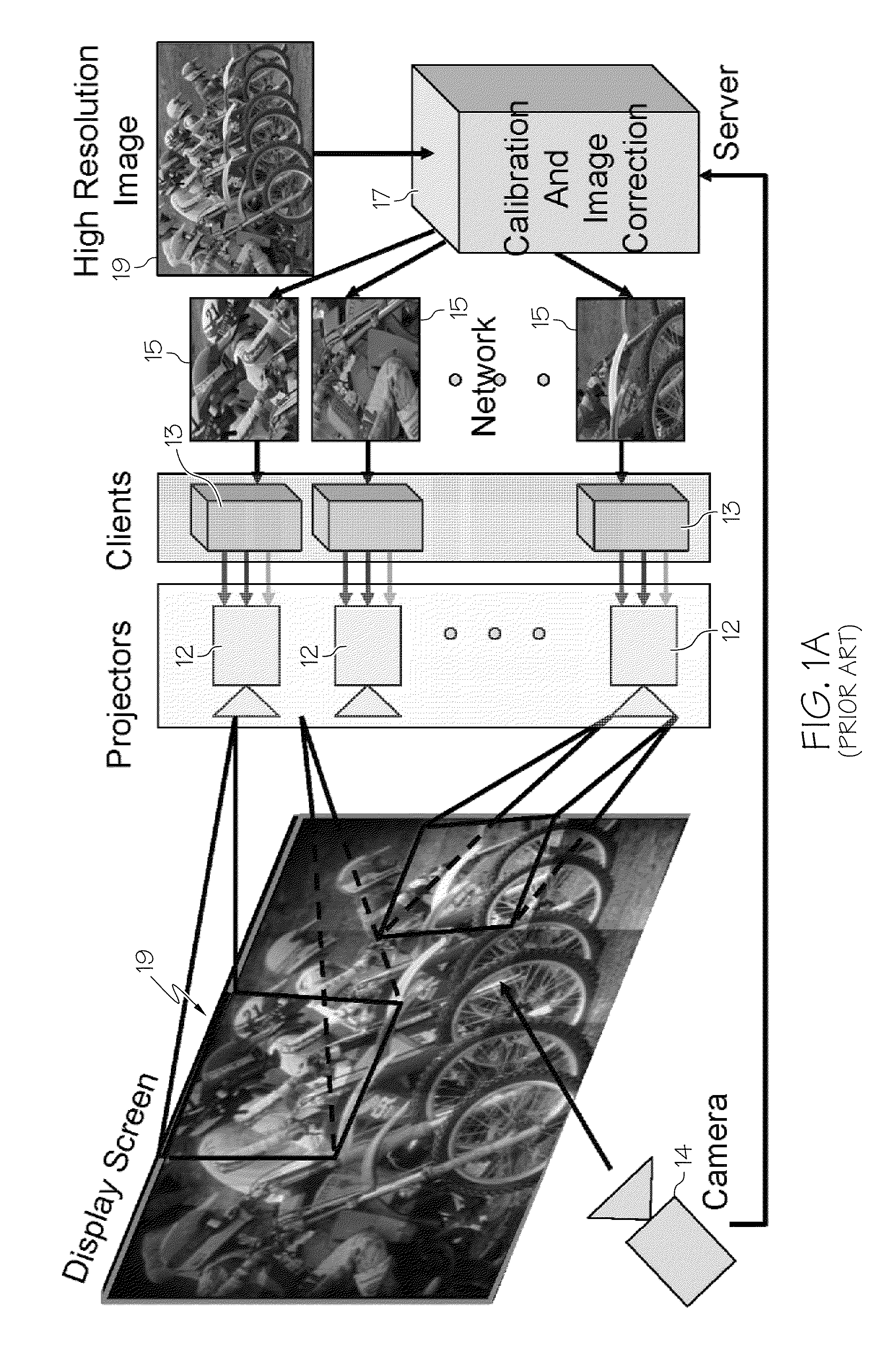Apparatus and method for self-calibrating multi-projector displays via plug and play projectors
a multi-projector display and projector technology, applied in the field of asynchronous distributed control of multiple projector displays, can solve the problems of non-geometrical matching of images, non-uniform color and brightness of images, and projection-based tiled displays, and achieve the effect of easy addition to displays
- Summary
- Abstract
- Description
- Claims
- Application Information
AI Technical Summary
Benefits of technology
Problems solved by technology
Method used
Image
Examples
Embodiment Construction
In the illustrated embodiment we disclose asynchronous distributed calibration of multi-projector displays where no central process / computer needs to know the number of projectors, their configuration, and the geometric or photometric relationship between the projectors a priori to create a seamless display.
Some of the basic elements to the illustrated embodiment are the following. First, we identify the minimal self-sufficient unit to realize distributed asynchronous calibration, namely a plug-and-play projector module (PPP) 10. PPP 10 is comprised of a projector 12, camera 14, and a computation and communication unit 16. Next, we formalize the architecture and capabilities of a display realized by the PPPs 10 via a distributed asynchronous calibration process.
We disclose five illustrative attributes of an asynchronous distributed methodology, namely methods to (1) detect the number of neighbors of a PPP 10, (2) find the position of a PPP 10 in a large display, (3) achieve geometri...
PUM
 Login to View More
Login to View More Abstract
Description
Claims
Application Information
 Login to View More
Login to View More - R&D
- Intellectual Property
- Life Sciences
- Materials
- Tech Scout
- Unparalleled Data Quality
- Higher Quality Content
- 60% Fewer Hallucinations
Browse by: Latest US Patents, China's latest patents, Technical Efficacy Thesaurus, Application Domain, Technology Topic, Popular Technical Reports.
© 2025 PatSnap. All rights reserved.Legal|Privacy policy|Modern Slavery Act Transparency Statement|Sitemap|About US| Contact US: help@patsnap.com



